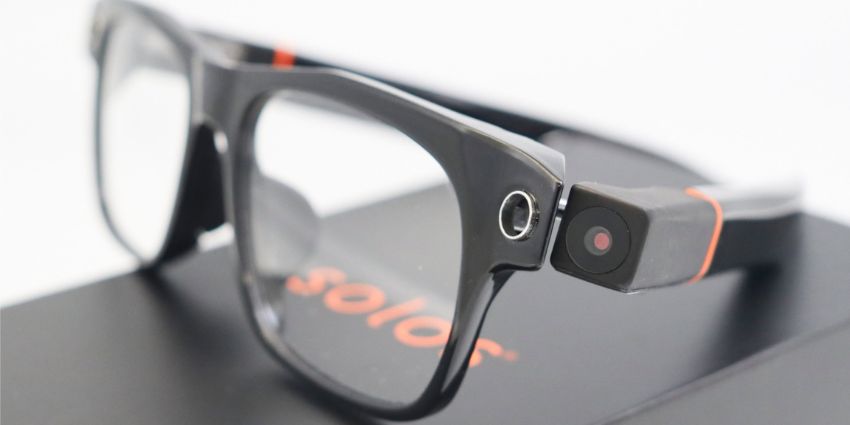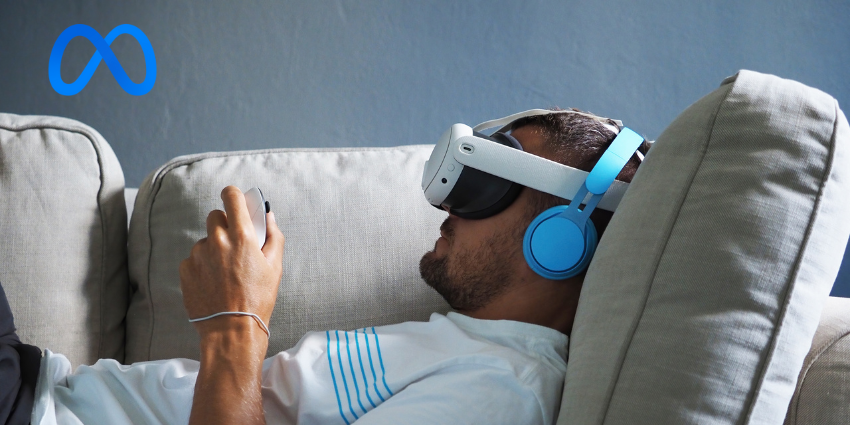Introduced at the 2024 Hong Kong Smart Glasses Summit, the Solos AirGo Vision smart glasses promise users a flexible alternative to Meta’s popular Ray-Ban specs. Building on an already impressive portfolio of intelligent wearables, these new Solos specs will offer users a built-in smart assistant powered by GPT-4o – OpenAI’s most powerful model.
Solos has proven to be a significant competitor in the smart glasses landscape in recent years, offering a range of specs enhanced with built-in audio, text-to-speech capabilities, and artificial intelligence. However, until recently, these glasses lacked one major feature: a built-in camera.
Keen to stay on the cutting-edge of the smart glasses market, Solos will soon be introducing its latest “Vision” specs to the public. The question is, what will these lightweight wearables be able to do, and do they have the potential to outperform well-known competitors like the Meta Ray-Bans?
What are the Solos AirGo Vision Specs?
The Solos AirGo Vision smart glasses are the latest in a series of intelligent specs to be introduced by Solos over the years. Like many innovators branching into the smart glasses space, Solos isn’t focusing exclusively on augmented reality with its wearables.
The AirGo collection of specs doesn’t include screens to showcase three-dimensional content overlaid on top of your real-world environment. If you want a true augmented reality experience, you might want to consider options like the RayNeo X2 or XReal Air 2 Ultra specs instead.
However, even without augmented reality, the Solos AirGo glasses are far more than just a standard set of spectacles. They come with built-in audio, a modular design so you can adjust the style of your glasses instantly, and a built-in AI assistant.
This smart assistant, powered by GPT-4o, can automatically translate languages, allowing you to communicate easily with people worldwide. You can also speak to your assistant with natural language, and it will respond either through the chat feature in the Solos companion app, or through the built-in speakers on your glasses.
The Solos AirGo Vision Specs
Solos hasn’t revealed a full spec sheet for its Vision glasses yet, nor has it announced an official release date or a price for the new wearables. However, based on the pictures we’ve seen of the AirGo Vision, it seems like the device will be an updated version of the Solos AirGo 3 specs.
At a glance, the Vision glasses look almost identical to the AirGo 3 wearables. The biggest difference is that the new specs will include a camera in the frame (more on that in a moment).
This means we can probably expect the specs to be pretty similar. The AirGo 3 specs boast the same modular design, with the option to switch between various lenses, including those with anti-reflection coatings and HEV (High Energy Blue Light) protection.
They also feature Solos’ unique smart hinge system, which allows users to choose from a range of styles and frames for their specs. Other features include:
- Up to 10 hours of battery life
- Wireless Bluetooth connectivity
- iOS and Android mobile support
- IP67 waterproof rating
- Virtual button (For pairing devices)
- Touch sensor controls for volume and access to your AI assistant
- USB-C charging port
The Solos AirGo 3 glasses are also extremely lightweight, weighing only 35g. Adding a camera might increase the weight of the Solos AirGo Vision specs slightly, but we imagine they’ll still offer users a comfortable and ergonomic experience.
That’s particularly true, considering you can switch between lenses and frames based on your needs. You can even add your own prescription to your glasses, which is great if you already rely on prescription lenses.
Design and Functionality
As mentioned above, the Solos AirGo Vision specs look almost exactly the same as the AirGo 3 smart glasses. They feature the same smart hinge system, the same swappable lens and frame options, and the same slightly bulky arms (like most smart specs).
They also have the same controls, including the virtual button, which you can use to pair your specs with your smartphone, and a touch sensor for volume control. The main difference is that once you upgrade to the AirGo Vision, you probably won’t be able to convince others that you’re not wearing a set of smart specs.
Unlike the AirGo 3 specs, these smart glasses feature a built-in camera, similar to the Ray-Ban smart glasses from Meta, allowing you to capture and evaluate visual content in real time.
Instead of simply being able to browse the web and ask your smart assistant basic questions as you go about your day, you’ll be able to quiz a custom version of ChatGPT about the objects and people you’re looking at. The glasses will be able to identify what you’re looking at (leveraging computer vision), and share useful information about images.
You can even ask the glasses to describe an image or give you directions to a specific location. Notably, while the glasses come with the latest GPT-4o assistant built-in, they’re also compatible with other AI models, such as Anthropic’s Claude and Google’s Gemini, allowing you to choose the generative AI solution that you like best.
The User Experience: What to Expect
The introduction of a new camera system into the Solos AirGo specs is likely to be valuable for a range of users. Already, we’ve seen plenty of XR and smart wearable enthusiasts using products like the Meta Ray-Bans to capture and stream content online, and unlock new levels of productivity.
Even if you don’t like the idea of recording everything you see with your intelligent specs, you can still use these glasses for various tasks. For instance, engineers and technicians can take pictures of products to share with subject matter experts when they’re troubleshooting issues.
You could even use the specs to translate foreign languages in real-time when you’re travelling, so it’s easier to navigate new environments and find the locations you’re looking for.
Of course, as we’ve seen during our reviews of other AI-enabled smart specs, there are still some bugs to overcome in this space. An assistant that can actually see what you’re looking at and answer questions about visual content can be very useful – when it works.
However, even leading solutions like the Meta Ray-Ban smart glasses occasionally struggle to process visual content and deliver inaccurate responses to questions. With that in mind, we recommend using glasses like these with caution.
Solos AirGo Vision: Release Date and Pricing
As mentioned above, Solos hasn’t shared an official release date for the AirGo Vision smart glasses yet. However, they are already selling a simpler version of these glasses, the AirGo 3 glasses, which include most of the same features outside of the in-built camera.
Currently, the AirGo 3 specs cost around $249, although the price can vary depending on the types of lenses and frames you want. Obviously, a camera-equipped version of these glasses is likely to be more expensive. We imagine the Vision specs will have a similar price to the Meta Ray-Bans, costing users around $300-$400, depending on your customization choices.
For now, it remains to be seen whether these specs will give Meta’s glasses a run for their money. For customers searching for enhanced AI-powered glasses, the Vision specs seem to offer an excellent combination of style, functionality, and modularity.
However, there’s always a chance demand for these types of specs will begin to dwindle as companies continue to infuse more augmented reality into their solutions. Meta has already confirmed that it’s working on a new set of glasses that combine AI and augmented reality.
If those glasses are released at a similar time to the Solos AirGo Vision specs, Solos may struggle to steal a decent share of the market from Meta.







